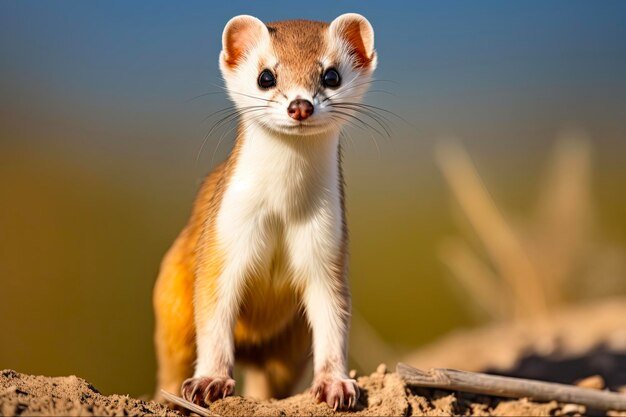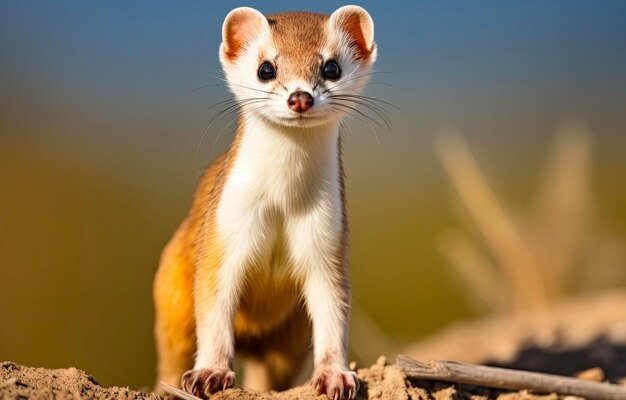
So, what exactly does a weasel do? Picture this: they’re like nature’s little pest controllers, helping keep rodent populations under control while also supporting broader biodiversity. Whether you’re a nature lover or just curious about wildlife, understanding the weasel’s role can enhance your appreciation for the delicate balance of ecosystems. Let’s dig deeper into how these fascinating creatures make an impact.
Understanding Weasels: Meet the Family
Weasels belong to the Mustelidae family, which includes otters, badgers, and ferrets. This diverse family can be found all over the world, except for Australia and Antarctica. Within the weasel family, there are several species, but the most common ones are the **short-tailed weasel** and the **long-tailed weasel**.
These animals are incredibly adaptable. They thrive in various habitats, from forests and grasslands to urban areas. Their small size—typically just a few inches long, excluding their tails—gives them a unique advantage in sneaking through dense underbrush or dense fields. You might even spot one dashing across your backyard, its sleek body moving quickly as it searches for prey. You might be wondering, how exactly do these little guys fit into the grand scheme of things?
The Weasel’s Diet and Hunting Skills
Weasels are primarily carnivorous, feasting on small mammals like mice, voles, and rabbits. Their diet allows them to play a crucial role in controlling these populations. Think of them as nature’s little exterminators, helping curb the growth of rodent communities.
What’s really interesting about weasels is their incredible hunting skill. They are agile and quick, capable of squeezing into small spaces to find their prey. A weasel’s sharp teeth and keen sense of smell make them effective hunters. And here’s the thing: they often hunt in a method called “stalking,” which allows them to ambush unsuspecting animals. This hunting technique is what makes them vital in maintaining the balance within their ecosystems.
The Weasel’s Impact on Biodiversity
The presence of weasels in an ecosystem is a sign of a healthy environment. By controlling rodent populations, weasels contribute to the overall health of the ecosystem. If rodent numbers get too high, they can cause significant harm to crops and compete with other wildlife for resources.
Furthermore, weasels can influence the populations of other predators. For example, they may serve as prey for larger animals like hawks and owls. This connection shows how interconnected the food web truly is. When weasels thrive, they help support a diverse range of species in their ecosystem. It’s a perfect example of how every creature, no matter how small, plays an essential role in the big picture.
Habitat and Territorial Behavior
Weasels are also known for their territorial behavior. They often establish a home range and mark their territory with scent markings. This behavior helps prevent overcrowding and competition for food within their populations, ensuring that their ecosystems remain balanced.
Their habitats usually include grassy fields, woodlands, and areas near water sources. These environments provide both shelter and plenty of hunting opportunities. By maintaining their territory, weasels ensure there’s sufficient space for their populations to thrive without becoming overwhelmed. It’s like having boundaries that allow for peace and coexistence among various species.
Threats to Weasels and Their Habitat
Unfortunately, weasels face several threats in today’s world. Habitat destruction, climate change, and human activities are pushing them into smaller and smaller areas. Urban development, in particular, can fragment their habitats, making it harder for them to find food and mates.
Additionally, due to their small size, they’re at risk from larger predators and also from domestic pets. This can lead to declining populations, which disrupts the balance in their ecosystems. Protecting weasels and their habitats is crucial because if they vanish, the impacts would ripple throughout the local environment.
Conservation Efforts
Various conservation initiatives are underway to protect weasels and their habitats. Wildlife conservation groups are focusing on preserving natural areas and promoting awareness about the significance of these animals in the ecosystem.
For individuals, simply being informed and spreading the word about weasel conservation can make a difference. Supporting local conservation programs and advocating for green spaces can help. Whether it’s through volunteering or educating others, you can play a part in protecting these fascinating creatures and ensuring they continue to thrive in our ecosystems.
Final Thoughts on Weasels in the Ecosystem
So, what’s the bottom line? Weasels may be small, but their impact on the ecosystem is significant. They serve as both predators and prey, playing a vital role in maintaining balance and biodiversity. The delicate dance they perform within the food web is a reminder of just how interconnected our natural world is.
As we learn more about these amazing creatures, it’s essential to appreciate their place in the ecosystem. By protecting them, we’re not only ensuring their survival but also the health of the ecosystems they inhabit. Let’s celebrate the weasel for its role as a tiny yet mighty guardian of nature!

